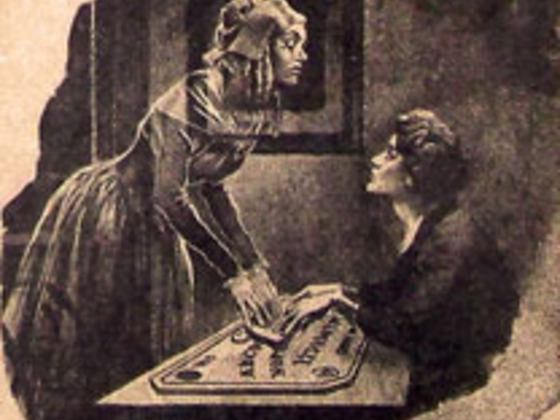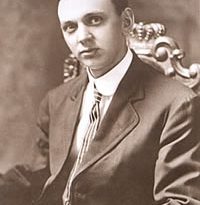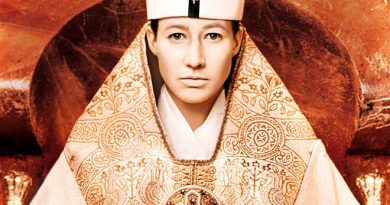Ouija poet Patience Worth – Author From Beyond The Grave
Over the years, St. Louis has been plagued with what some supernatural enthusiasts might consider to be one of the greatest unsolved mysteries of all time. Curran was born Pearl Lenore Pollard in Mound City, Illinois. The family moved to Texas when she was eight months old and she started school when she was six. She was an average but uninterested student, eventually dropping out in her first high school year, later stating she had a nervous breakdown due to the strenuous academics. She later returned to classes at St. Ignatius Catholic school.
Curran was a normal girl and was sensitive about her looks, considering herself to be ugly. She admitted to having little imagination and few ambitions, except to be successful as a singer. She had a short attention span and read very little during her formative years.
Her family moved to St. Louis when she was 14. She made a last attempt at attending school but was discouraged when placed in a lower grade based on her academic skills. However, she took music lessons and training in piano and voice and aspired to be a prima donna. About that time the family moved again, to Palmer, Missouri. As Curran’s musical talents blossomed, she was sent to Kankakee, Illinois for voice training, before moving to Chicago for tuition from J.C. Cooper. She worked at the McKinley Music Company addressing envelopes for $6 a week, then the Thompson Music Company selling music. From the age of 18 to 24 she worked at assorted jobs in Chicago during winter months, and during the summer she taught music at home in Missouri.
Pearl married John Howard Curran when she was 24. Though by no means wealthy, they lived a lifestyle which gave Pearl free time for moviegoing or playing cards with her husband or neighbors. The Currans had an average education for that time and owned few books; neither of them had traveled extensively. The first seven years of their marriage were uneventful.
In 1913, Pearl Curran was a St. Louis housewife with no interest in the occult, other than a little dabbling with a Ouija board (not uncommon at the time). She played piano, never read much and had little education. She briefly thought of becoming an actress but gave that up when she married John Curran.
Her marriage was an uneventful as her childhood had been. The Currans were not rich, but they did make a comfortable living. Pearl had a maid to take care of the household chores and she and her husband enjoyed going to restaurants and to the theater. They were a social couple and enjoyed meeting friends and playing cards with neighbors in the evening. They seldom read anything, outside of the daily newspaper and some of the periodicals of the day and never really had an opportunity to associate with well-educated writers or poets. They were happy though and content in their middle-class home with their close friends and acquaintances.
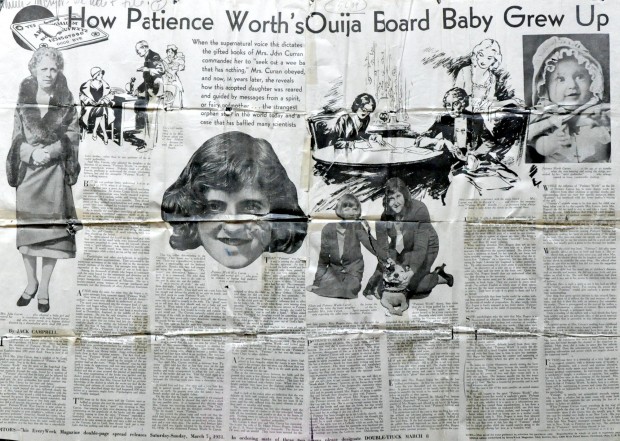
In the afternoons, while their husbands were at work, Pearl would often have tea with her mother and with a friend who lived nearby, a neighbor named Mrs. Hutchings. She believed that Ouija boards were a boring and silly pastime having seen the pointer spell out nothing but gibberish. Then, to the ladies surprise, the message on the board seemed to make sense. “Many moons ago I lived. Again I come. Patience Worth is my name,” it spelled out.
Beginning in July 1912 Pearl Curran and her friend Emily Grant Hutchings were making a call on a neighbor who had a ouija board and during that call there came what purported to be a message from a relative of Mrs. Hutchings. Mrs. Hutchings then bought a ouija board and took it to Mrs. Curran’s house with the idea of continuing the communications. Pearl was somewhat indifferent and had to be coaxed to participate at the board. On June 22, 1913 a communication from “Pat-C” began to come through. Then on July 8, 1913 the board seemed to be possessed with unusual strength and supposed communications from Patience Worth began. “Many moons ago I lived. Again I come. Patience Worth my name. Wait, I would speak with thee. If thou shalt live, then so shall I. I make my bread at thy hearth. Good friends, let us be merrie. The time for work is past. Let the tabby drowse and blink her wisdom to the firelog.” When asked when she lived, the dates 1649 – 94 were given and that her home was “Across the sea”.
Although Worth indicated that she was from England, she never named the town or village in which she lived. She did give some clues which were deduced by Casper Yost and other intimates of the Currans to indicate that Patience Worth had lived in rural Dorsetshire with her father John and mother Anne. Mrs. Curran had a mental picture of the place in which Patience Worth lived indicating that Patience lived in “…green rolling country with gentle slopes, not farmed much, with houses here and there. Two or three miles up this country on this road was a small village —few houses.” Mrs. Curran then visualized Patience leaving for America on a huge, wood three-masted schooner. Patience Worth was described by Mrs. Curran as “…probably about thirty years. Her hair was dark red, mahogany, her eyes brown, and large and deep, her mouth firm and set, as though repressing strong feelings. Her hair had been disarranged by her cap, and was in big, glossy, soft waves.” Mrs. Curran also saw Patience “sitting on a horse, holding a bundle tied in sail-cloth, tied with thongs and wearing a coarse cloth cape, brown-gray, with hood like a cowl, peaked. The face is in shadow. She is small and her feet are small—with coarse square-toed shoes and gray woolen stockings.” After a long voyage the ship arrives at the jagged coast of America where they could find no landing place for the ship. Several flat boats were launched and Mrs. Curran saw Patience standing in the prow of her boat and one of the first to reach the shore. Patience Worth was later to indicate that she was eventually killed by the Indians.
No authenticated documentation has ever been found to indicate that someone named Patience Worth had lived in Dorsetshire England during the later 17th century nor are there any ship logs from that period with the name Patience Worth. The name Patience Worth does occur in census data of early settlers of the United States but none of them has been linked to the Patience Worth of Pearl Curran.
In 1916, in a book with a foreword written by Casper Yost, editor of the St. Louis Globe-Democrat, Henry Holt and Company publicized Curran’s claims that she had contacted the long dead Patience Worth. Curran claimed she began to anticipate what the Ouija board was going to spell and by 1919 the pointer would just move aimlessly about the board. Curran described pictorial visions which accompany the coming of the words from Patience. She said “I am like a child with a magic picture book. Once I look upon it, all I have to do is to watch its pages open before me, and revel in their beauty and variety and novelty….When the poems come, there also appear before my eyes images of each successive symbol, as the words are given me….When the stories come, the scenes become panoramic, with the characters moving and acting their parts, even speaking in converse. The picture is not confined to the point narrated, but takes in everything else within the circle of vision at the time….If the people talk a foreign language, as in The Sorry Tale, I hear the talk, but over and above is the voice of Patience, either interpreting or giving me the part she wishes to use as story.” Pearl Curran went on to describe her association with Patience Worth as “one of the most beautiful that can be the privilege of a human being to experience.” Pearl and Patience together wrote several novels including Telka, The Sorry Tale, Hope Trueblood, The Pot upon the Wheel, Samuel Wheaton, An Elizebethan Mask as well as several short stories and many poems.
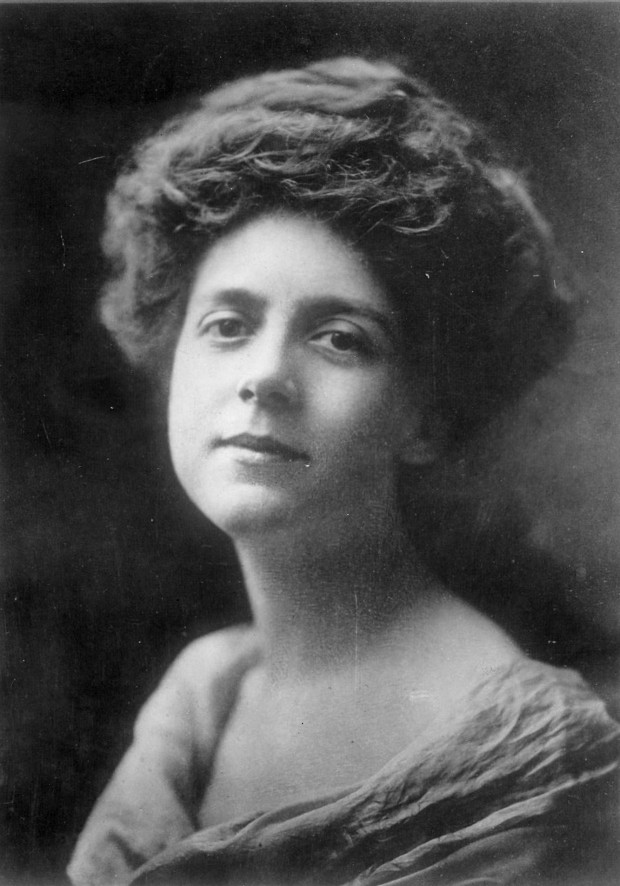
The Patience Worth writings coincided with a revival of Spiritualism in the U.S. and Britain, possibly facilitating interest in the matter. Skeptics derided certain aspects of the supposed communication, noting particularly that Patience was able to write a novel about the Victorian age, an era some 200 years after the one in which she claimed to have lived. Still, the literature produced was considered to be of a high quality by some; the literary critic William Marion Reedy considered The Sorry Tale to be a new classic of world literature. Patience Worth was also listed as one of the outstanding authors of 1918 by The Joint Committee of Literary Arts of New York. She was also cited by William Stanley Braithwaite in the 1918 edition of the Anthology of Magazine Verse and Year Book of American Poetry by printing the complete text of five of her poems, along with other leading poets of the day including William Rose Benet, Amy Lowell, and Edgar Lee Masters. Braithwaite’s index of magazine verse for 1918 listed the titles of eighty-eight poems by Patience Worth that appeared in magazines during the twelve-month period, only two of which were considered by Braithwaite to be lacking in any distinction. The same index listed ten poems by Amy Lowell and five by Edna St. Vincent Millay.
After the death of her husband John Curran on June 1, 1922 who kept meticulous records of the Patience Worth sessions, the record of the Patience Worth sessions became episodic and fragmentary, with long gaps of time unaccounted for. Pearl was pregnant with her first child which was born six months after her husband’s death. Pearl now had a family of four to support by herself and her financial situation was bleak, so much so that Herman Behr, a devoted friend sent money to Mrs. Curran and announced that he would continue to do so as long as she needed it. Mr. Behr provided Mrs. Curran with an income of $400 a month for a number of years. Mrs Curran then entered the lecture circuit to make some money to support her family. A few months later her mother Mrs. Mary Pollard died. The sessions with Patience Worth still continued regularly at Mrs. Curran’s home. Mrs. Curran’s financial situation continued to be bleak. She married two more times but both marriages were short-lived. In the summer of 1930 Mrs. Curran left St. Louis for good and moved to California to live with an old friend Mrs. Alexander Bailey (Dotsie) Smith in the Los Angeles area. Patience was kept busy at the sessions, as always, by requests for her comments on major topics of the day and other issues. She continued to communicate through Pearl through November 25, 1937 when she gave her final communication. Pearl apparently had received a prior communication from Patience that she (Pearl) was going to die as Pearl told Dotsie Smith “Oh Dotsie, Patience has just shown me the end of the road and you will have to carry on as best you can.” Even though Pearl had not been in ill health, she developed pneumonia late in November and died on December 3, 1937.
Pearl was fascinated with the messages that they were receiving and began devoting more and more time to the Ouija board. Eventually though, the messages began coming so fast that no one could write them down and Pearl suddenly realized that she didnt need the board anymore. The sentences were forming in her mind at the same time they were being spelled out on the board. She began to “dictate” the replies and messages from Patience to anyone who would write them. She would first employ a secretary, but later Pearl would record the words herself, using first a pencil and then a typewriter.
For the next 25 years, Patience Worth dictated a total of about 400,000 words. Her works were vast and consisted of not only her personal messages, but creative writings as well. She passed along nearly 5,000 poems, a play, many short works and several novels that were published to critical acclaim.
People came from all over and the Currans, always gracious and unpretentious, welcomed visitors who wanted to witness the automatic writings sessions where Pearl received information from Patience Worth. Authorities in the field of psychic investigation came, as well as people from all over the country who had begun to read and admire the writings attributed to Patience. The Currans never charged any admission to the house and all of the writing sessions were conducted with openness and candor. There were no trappings of Spiritualism here with darkened rooms and candles. Pearl would usually just sit in a brightly lit room with her notebook or typewriter and when the messages began to come to her, she would begin to write. The stories were filled with ancient languages, words and objects that had not been in use for hundreds of years and more. Things that there is no way that Pearl could have known about.
Pearl explained that as the words flowed into her head, she would feel a pressure and then scenes and images would appear to her. She would see the details of each scene. If two characters were talking along a road, she would see the roadway, the grass on either side of it and perhaps the landscape in the distance. If they spoke a foreign language, she would hear them speaking but above them, she would hear the voice of Patience as she interpreted the speech and indicated what part of the dialogue she wanted in the story. She would sometimes even see herself in the scenes, standing as an onlooker or moving between the characters. The experience was so sharp and so vivid that she became familiar with things that she could have never known about living in St. Louis. These items included lamps, jugs and cooking utensils used long ago in distant countries, types of clothing and jewelry word by people in other times and the sounds and smells of places that she had never even heard of before.
On once occasion, Pearl was shown a small yellow bird sitting on a hedge. Patience wished to include it in a poem, but Pearl had no idea what type of bird it was. Finally, Patience became frustrated and said, “He who knoweth the hedgerows knoweth the yellow-hammer.” Pearl and her husband later consulted an old encyclopedia and saw that the yellow-hammer in her vision was not a type seen in America, but only in England.
In spite of the visions and odd experiences though, Pearl never went into a trance during the writing sessions, as a Spiritualist medium would have done. She understood the writing as it came and yet while calling out the words to the stenographer, she would smoke cigarettes, drink coffee and eat. She seemed always to be aware of her surroundings, no matter what else might be going on with her.
As time passed, Patience Worth became tolerant but condescending of her hosts abilities. Patience often scorned Pearl, but never failed to show her kindness. She simply seemed to think that her human counterpart was slightly stupid and that only by perseverance was she able to make herself known, especially when Pearl failed to grasp the spellings and meanings of certain words. But they plodded on together, continuing to amass a great body of work until about 1922.
In this year, the connection between the two of them began to deteriorate, possibly due to changes in Pearls life and the fact that she had become pregnant for the first time at age 39. After her husband and her mother both died, the contact between Patience and Pearl became less and less often and eventually it died away.
By this time too, public interest in the mystery had faded, especially as no solution had ever been posed as to how the St. Louis housewife was accomplishing such remarkable feats. After the publication of several books and hundreds of poems, interest in Patience Worth vanished and cynicism replaced it. Debunkers accused Pearl of hiding her literary talent in order to exploit it in such a bizarre way and become famous. However, exhaustive studies have shown this to be highly unlikely, if not impossible. Scholars have analyzed Patiences works and have found them to accurate in historical detail and written in such a way that only someone with an intimate knowledge of the time could have created them.
Pearl Curran died in California on December 4, 1937. The St. Louis Globe-Democrat headlined her obituary with the words: “Patience Worth is Dead.” And whatever the secret of the mysterious “ghost writer”, it went to the grave with her.
So, what really happened in this case and why does it remain today as one of our great unsolved mysteries? Was there actually an entity speaking to Pearl from beyond the grave? Or could the writings have simply come from her unconscious mind?
No verification was ever made that Patience Worth actually lived in the 1600s and yet experts who studied Pearl Curran doubted that she could have produced the works attributed to the ghost on her own. She was a woman of limited education with no knowledge of the language used or the history and subject matter that was written of by the alleged Patience Worth. Pearl simply could not have created the works of literary quality that have become known as the works of her spiritual counterpart.
